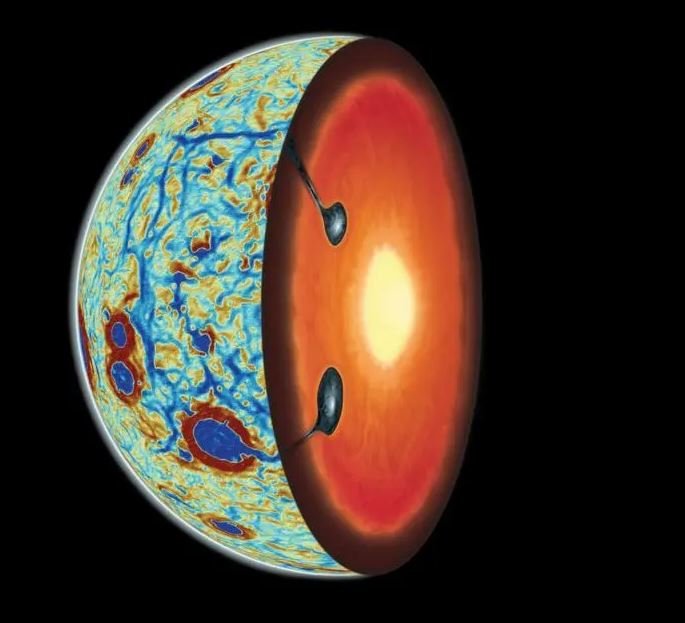A new study conducted at the Lunar and Planetary Laboratory of the University of Arizona in the United States, It suggests that our Moon experienced major instability in its interior, resulting in the moon literally turning upside down. Scientists noticed that the Moon’s gravitational map fit the proposed model better; For decades, science has looked at the moon’s history from one perspective, but the discovery could change that.
Researchers also noticed that: The Moon’s surface is chemically asymmetrical, which could also happen when the mantle of a celestial body flips over. The idea of the lunar mantle collapsing is an old one, but only now have scientists been able to gather evidence to support the hypothesis.
A series of simulations were carried out to understand what might have happened to the Moon thousands of years ago; One indicates that the object’s gravitational anomalies are consistent with the presence of dense, mineral-rich rocks. The study was published in the scientific journal Nature Geoscience.
“However, despite a wealth of geochemical evidence, physical evidence for the nature of the tipping is lacking. Here we combine gravity reversals with geodynamic models to elucidate this critical phase of lunar evolution. We show that the observed polygonal pattern of linear gravity anomalies surrounding the near-orbit-marine region is the result of previous stratiform uplifts.” “It is consistent with traces of ilmenite-containing cumulates remaining after global mantle uplift in regions where it is present.”
The moon turned upside down
The paper’s results show that this transformation occurred about 4.22 billion years ago, when the Moon had just formed from a piece that had separated from the Earth. Although there is no evidence that the celestial body formed in this way, the scientific community accepts the above-mentioned scenario..
Another piece of evidence is that volcanic rocks are more visible on the side of the Moon facing the Earth. Researchers state that this is because the Moon was covered in magma when it formed, forming the Moon’s mantle and outer shell. Simulations explain that magma beneath the crust can crystallize into denser minerals such as ilmenite.
In recent years, these denser materials have sunk and mixed with the mantle. In this way The moon turned upside down and some of these minerals returned to the lunar surface due to lava flows.
“The gravitational anomalies confirm the prediction that the eventual subsidence of these dense materials took the form of sheet-like uplifts, and that these features may be preserved throughout geological history while constraining the timing of the upturn. Thus, the Moon’s gravitational field has been widely postulated as one of the defining events of early lunar history, the paper concludes. , but the critical record of the upheaval of the lunar mantle, the details of which have been hitherto unknown,” he adds.
Did you like the content? Read more interesting facts about the Moon at TecMundo. If you wish, take the opportunity to understand why the Moon is moving away from the Earth.
Source: Tec Mundo
I’m Blaine Morgan, an experienced journalist and writer with over 8 years of experience in the tech industry. My expertise lies in writing about technology news and trends, covering everything from cutting-edge gadgets to emerging software developments. I’ve written for several leading publications including Gadget Onus where I am an author.













